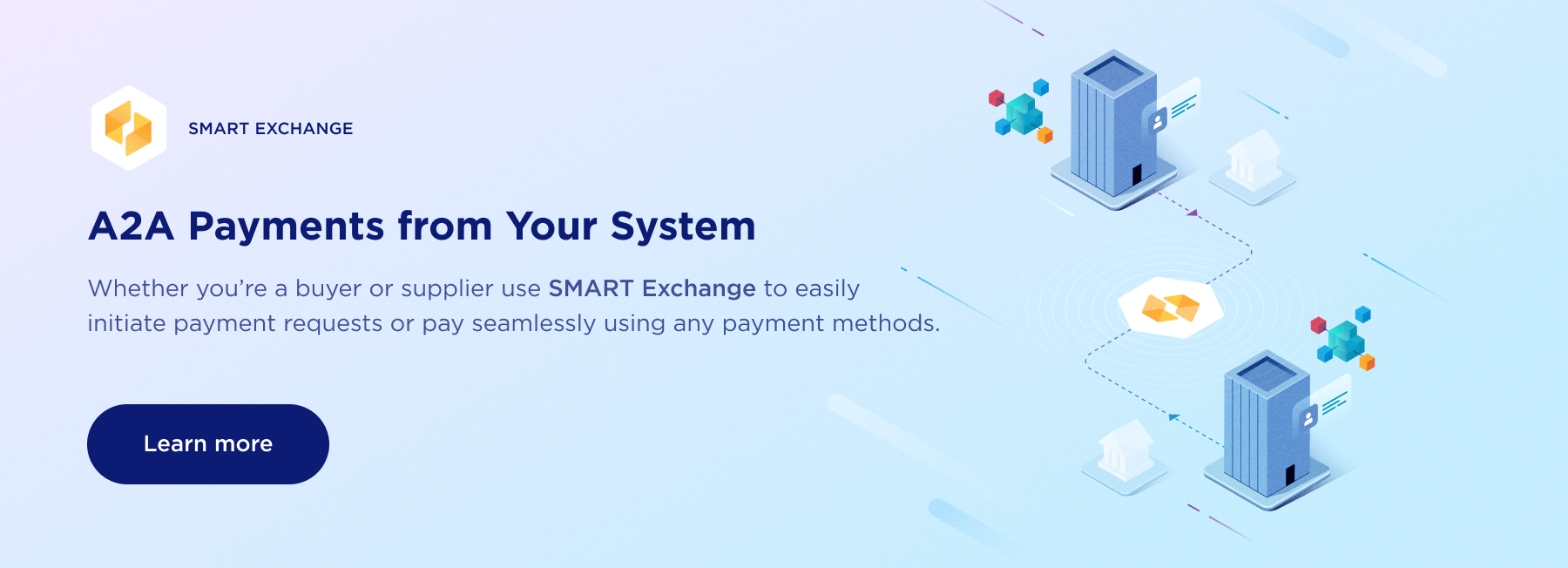If your organization is struggling with high procure-to-pay costs, help may be in sight.
A new approach to paying suppliers is radically transforming procure-to-pay.
Why Automate Procurement Processes
Procure-to-pay automation is long overdue.
Despite the clear benefits of optimizing the procure-to-pay process, many businesses still have costly manual processes, longer cycle times, and poor control over working capital.
Finance leaders cite a lot of reasons for dragging their feet on procure-to-pay automation:
-
-
-
-
-
End-user resistance to change
-
A lack of knowledge
-
A lack of capital budget
-
A lack of IT resources
-
-
-
-
Some finance departments are unsure of how to build a business case for automation.
But automating procure-to-pay has taken on greater urgency because of the operational disruption and mounting cashflow and spend management pressures resulting from the pandemic.
Indeed, 86 percent of purchase-to-pay organizations consider digitally transforming their function to be of “critical” or “major” importance, according to research from The Hackett Group.
A chief priority for procure-to-pay organizations should be to digitize all their processes to eliminate the payment and data siloes that contribute to the friction in the way they do business with suppliers.
Challenges in Procure-to-Pay
Procure-to-pay information arrives in many forms, including different data standards, report formats, scorecards, master data elements, and repositories of unstructured data. Payment modalities further complicate things.
While many procure-to-pay departments have deployed point solutions to address operational challenges, these systems typically are closed-loop networks with bilateral integration and unique file formats, account requirements, logins and passwords, and proprietary integrations.
The result is manual processes and inadequate visibility across the procure-to-pay lifecycle.
The biggest challenges that procure-to-pay leaders face can be traced back to these siloes:
- Lots of approval bottlenecks and long hours reconciling transactions
- Tons of time wasted keying invoice data and chasing down information
- Headaches trying to match invoices to purchase orders – and back-and-forth e-mails and phone calls trying to get to the bottom of transactions that do not match
- Long invoice approval cycles that result in late payment penalties and supplier inquiries
- Expensive, time consuming and risky check payments to suppliers
These issues cannot be solved with more point solutions. What procure-to-pay departments need is a way to eliminate friction across their function.
That is what an account-to-account (A2A) solution does.
What is A2A Automation?
An A2A solution combines RTP Request for Payment (RFP) functionality, accounts payable invoicing, seamless ERP integration, and payment services on a single solution.
The RTP network facilitates the immediate transmission and settlement of payments and the exchange of standardized and enhanced remittance data.
Invoicing capabilities enable suppliers to instantly present invoices via an e-invoice 24/7/365 for initial or recurring bills in their customers’ preferred online or mobile banking channel.
Buyers can instantly approve invoices from a mobile device. ERP integration connects buyers and sellers and facilitates the exchange of data without the need for manual data entry. And payment services manage a directory of trading partners, payment terms and preferences, standard reconciliation information, and banking accounts details.
The information typically required to send electronic payments (i.e. the bank routing number and account number) is not always readily available. Payment services remove this barrier to electronic payments.
Eliminating friction with an A2A solution enables buyers to reduce manual tasks, make more payments on-time, better manage their working capital, reduce supplier inquiries, and eliminate the cost and risk of maintaining supplier banking account data. And buyers can do all this without having to log into a portal or maintaining additional profiles and credentials.
- Learn about the whole process
Buyers view the RFP message and any payment-related information and then pay instantly or schedule the payment for future release, thus allowing the full control over the movement of their funds.
Once the payment is processed, a final, irrevocable payment is debited from the buyer’s bank account (and simultaneously credited to the seller’s bank account), and both parties are notified that the payment has been made.
Seventy-nine percent of invoice processing is mostly or fully automatable, McKinsey & Company says. Ninety-three percent of invoice-to-pay payment processing is mostly or fully automatable.
A2A automation makes it easy for procure-to-pay departments to make this a reality.
Why Automate Procure-to-Pay
Now is the time for procure-to-pay departments to rethink the way they operate.
Procure-to-pay departments with a high level of automation save 54 percent on invoice processing costs and use one-third as many internal employees as their peers with little or no automation.
In times like these, this is music to a CFO’s ears.
If digital transformation is a priority for your procure-to-pay organization, let Transcard show you how our A2A solution can help.





